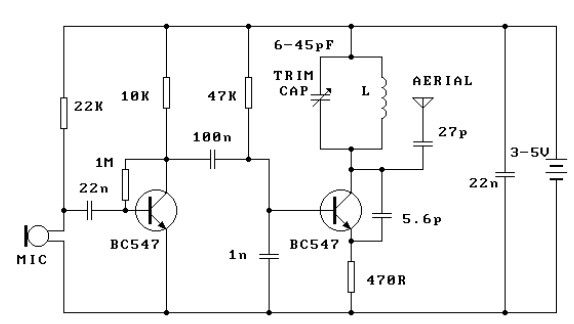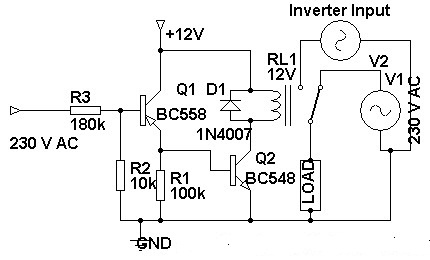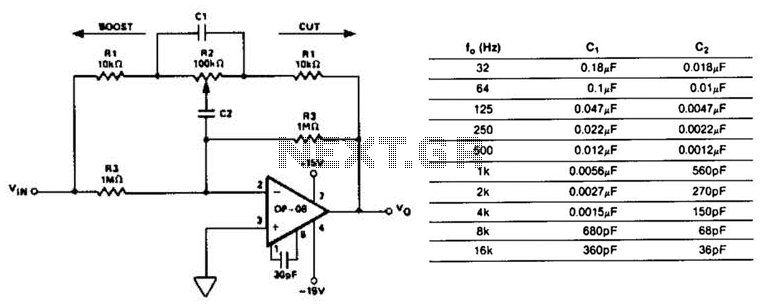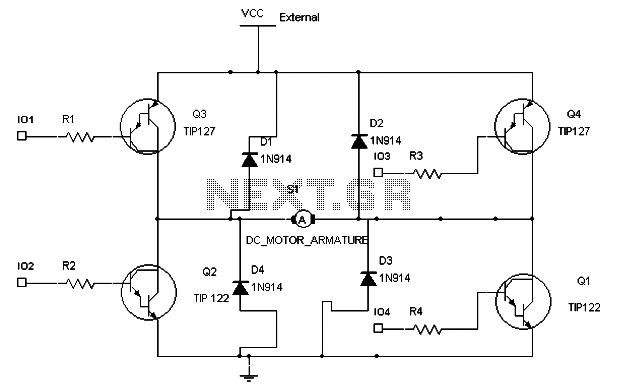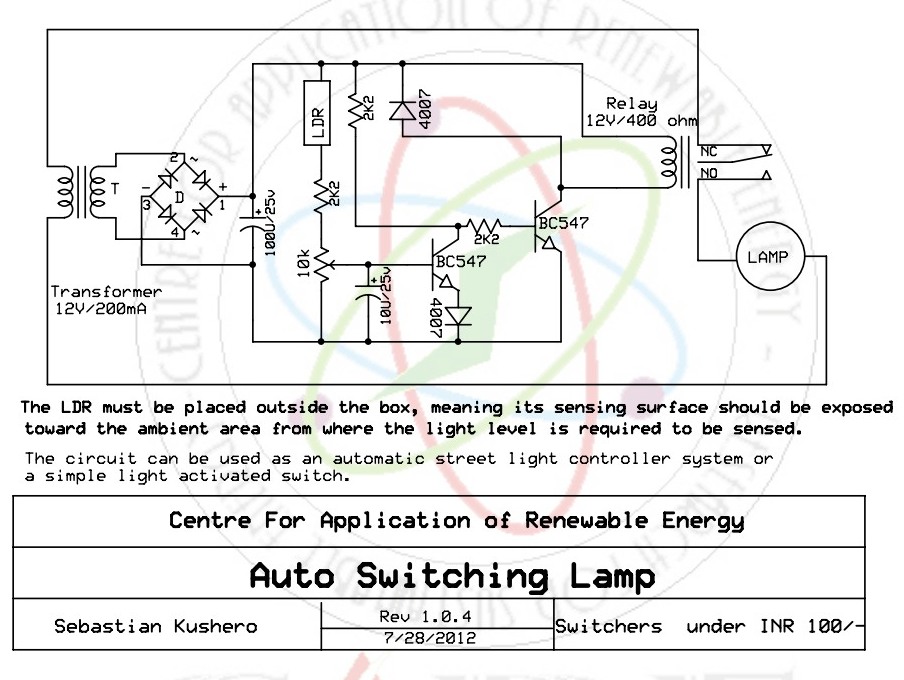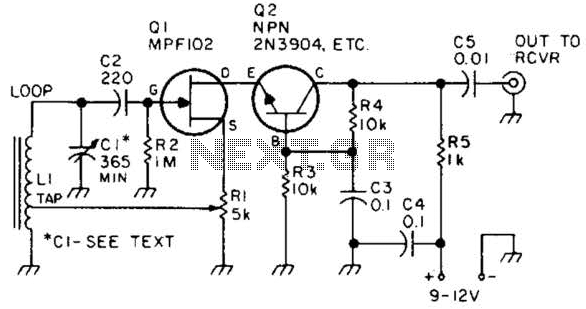
up down counter circuit
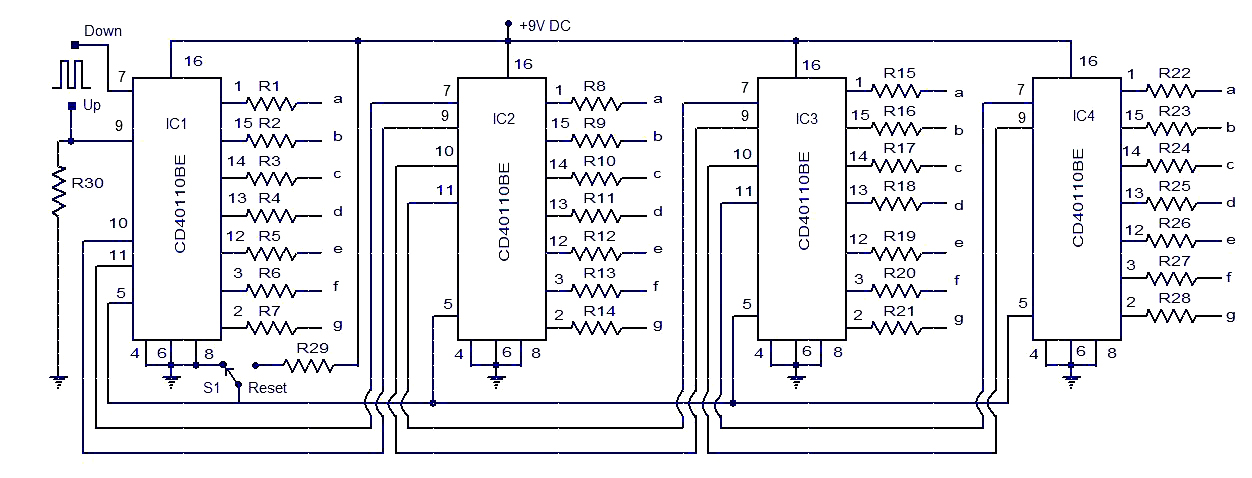
This circuit diagram illustrates a simple up/down counter suitable for various applications. It utilizes the CD40110BE IC, a CMOS decade up/down counter. Common cathode seven-segment displays are connected to the outputs of each IC. The display connected to IC1 shows the lowest number, while the display connected to IC4 indicates the highest number. Synchronous counting is facilitated by linking the BORROW and CARRY pins of the preceding IC to the CLK DOWN and CLK UP pins of the subsequent IC. An UP counting trigger pulse is applied to pin 7 of IC1, while a down counting trigger pulse is applied to pin 9 of IC1. The RESET pins of all ICs are tied together and must be connected to ground during normal operation. To reset the counter, the RESET pins can be connected to the positive supply using switch S1.
The circuit employs the CD40110BE, which is designed for counting applications and can manage both up and down counting operations. Each IC in this configuration can count from 0 to 9, and by cascading multiple ICs, the overall counting range can be expanded. The common cathode seven-segment displays provide a visual indication of the current count, with each display corresponding to a specific IC in the series.
The connection of the BORROW and CARRY pins between the ICs ensures that the counting process remains synchronized across multiple stages. When the count reaches its maximum value in one IC, the CARRY output triggers the next IC to increment its count. Conversely, when the count decreases to zero, the BORROW signal informs the preceding IC to decrement accordingly. This interconnection is crucial for maintaining the integrity of the counting sequence.
The trigger pulses for counting are essential for the operation of the circuit. The UP counting pulse at pin 7 of IC1 allows the counter to increment, while the down counting pulse at pin 9 facilitates decrementing the count. These pulses can be generated using a push-button switch or a microcontroller, depending on the application's requirements.
The RESET functionality is also a critical aspect of this design. By tying the RESET pins to ground during normal operation, the counter maintains its current state. However, when a reset is needed, activating switch S1 connects the RESET pins to the positive supply, clearing the count and setting all ICs back to zero. This feature is particularly useful for applications requiring a fresh start or recalibration.
Overall, this up/down counter circuit provides a versatile solution for various counting applications, from simple educational projects to more complex industrial control systems. Its design leverages standard IC components and easily integrates with other electronic systems, making it a valuable addition to any electronics toolkit.This is the circuit diagram of a very simple up down counter that can be used of a large number of applications. The circuit is based on the IC CD40110BE which is a CMOS decade up/down counter. For ICs are used here. Common cathode seven segment display is connected to the 7-segment output of each IC. Display connected to the IC1 represents the low est number and display connected to IC4 represents the largest number. Synchronous counting is achieved by connecting BORROW and CARRY pins of the preceding stage IC to the CLK DOWN and CLK UP of the next stage IC. For UP counting trigger pulse must be given to the pin7 of IC1 and for down counting trigger pulse must be given to the pin9 of IC1.
The RESET pins of all IC are shorted and they have to be connected to ground during normal operation. Connecting the RESET pins to positive supply using the switch S1 resets the counter. 🔗 External reference
The circuit employs the CD40110BE, which is designed for counting applications and can manage both up and down counting operations. Each IC in this configuration can count from 0 to 9, and by cascading multiple ICs, the overall counting range can be expanded. The common cathode seven-segment displays provide a visual indication of the current count, with each display corresponding to a specific IC in the series.
The connection of the BORROW and CARRY pins between the ICs ensures that the counting process remains synchronized across multiple stages. When the count reaches its maximum value in one IC, the CARRY output triggers the next IC to increment its count. Conversely, when the count decreases to zero, the BORROW signal informs the preceding IC to decrement accordingly. This interconnection is crucial for maintaining the integrity of the counting sequence.
The trigger pulses for counting are essential for the operation of the circuit. The UP counting pulse at pin 7 of IC1 allows the counter to increment, while the down counting pulse at pin 9 facilitates decrementing the count. These pulses can be generated using a push-button switch or a microcontroller, depending on the application's requirements.
The RESET functionality is also a critical aspect of this design. By tying the RESET pins to ground during normal operation, the counter maintains its current state. However, when a reset is needed, activating switch S1 connects the RESET pins to the positive supply, clearing the count and setting all ICs back to zero. This feature is particularly useful for applications requiring a fresh start or recalibration.
Overall, this up/down counter circuit provides a versatile solution for various counting applications, from simple educational projects to more complex industrial control systems. Its design leverages standard IC components and easily integrates with other electronic systems, making it a valuable addition to any electronics toolkit.This is the circuit diagram of a very simple up down counter that can be used of a large number of applications. The circuit is based on the IC CD40110BE which is a CMOS decade up/down counter. For ICs are used here. Common cathode seven segment display is connected to the 7-segment output of each IC. Display connected to the IC1 represents the low est number and display connected to IC4 represents the largest number. Synchronous counting is achieved by connecting BORROW and CARRY pins of the preceding stage IC to the CLK DOWN and CLK UP of the next stage IC. For UP counting trigger pulse must be given to the pin7 of IC1 and for down counting trigger pulse must be given to the pin9 of IC1.
The RESET pins of all IC are shorted and they have to be connected to ground during normal operation. Connecting the RESET pins to positive supply using the switch S1 resets the counter. 🔗 External reference
Warning: include(partials/cookie-banner.php): Failed to open stream: Permission denied in /var/www/html/nextgr/view-circuit.php on line 713
Warning: include(): Failed opening 'partials/cookie-banner.php' for inclusion (include_path='.:/usr/share/php') in /var/www/html/nextgr/view-circuit.php on line 713
